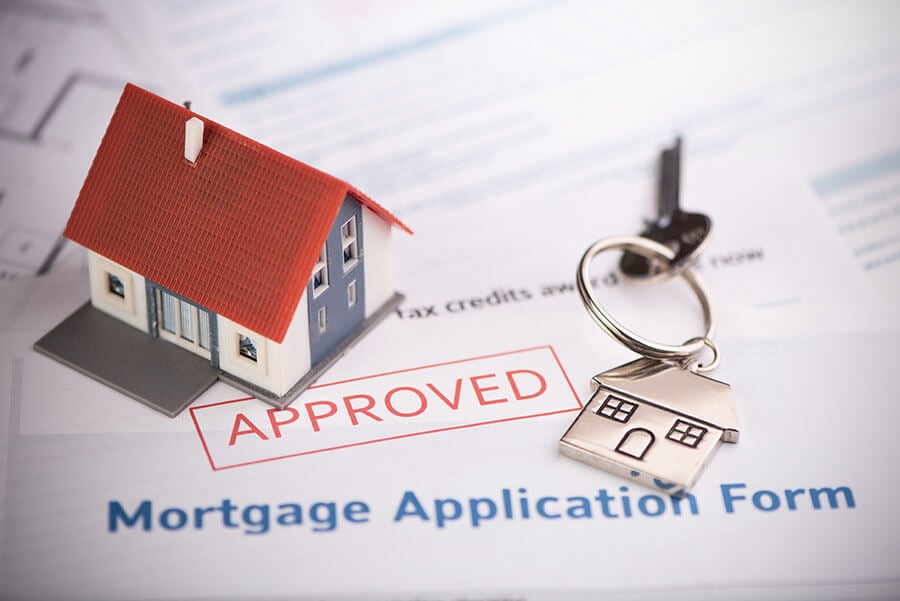The Important Factors to Take Into Consideration When Deciding On Between Fixed-Rate and Adjustable-Rate Home Mortgage Car Loans
When examining mortgage alternatives, debtors deal with a critical decision between adjustable-rate and fixed-rate fundings, each offering unique advantages and potential pitfalls. Key factors to consider such as interest price security, predictability in monthly payments, and the effects of potential price modifications can significantly affect long-term financial health and wellness.
Rate Of Interest Security
When picking a mortgage, recognizing passion price security is vital for notified decision-making. Rates of interest can substantially impact the general price of a home mortgage, and identifying the nature of these prices is necessary for debtors. Fixed-rate home loans provide the benefit of consistent regular monthly settlements over the life of the funding, shielding borrowers from market changes. This security makes it possible for homeowners to plan their financial resources with better assurance, as they will not be impacted by climbing rates of interest.
On the various other hand, variable-rate mortgages (ARMs) start with reduced first rates that might change occasionally based upon market problems. While this can result in reduced repayments initially, it likewise presents uncertainty, as borrowers might face enhanced repayments if rates of interest rise. For those taking into consideration an ARM, it is important to evaluate the possibility of rate adjustments, the potential for payment rises, and the size of the initial fixed-rate period.
Eventually, the option in between adjustable-rate and fixed-rate home mortgages hinges on specific risk tolerance and monetary situations. Recognizing rate of interest stability assists debtors make notified choices that straighten with their lasting economic objectives.
Regular Monthly Repayment Predictability
While customers frequently prioritize rates of interest stability, the predictability of monthly settlements is just as crucial in the mortgage choice procedure (Conventional mortgage loans). Monthly repayment predictability plays a crucial function in budgeting and monetary preparation, as it directly impacts a house owner's cash flow and total monetary health
Fixed-rate mortgages use a constant month-to-month settlement throughout the life of the loan, enabling borrowers to expect and plan their expenses effectively. This stability can be specifically beneficial for novice homebuyers or those on a set income, as it gets rid of the unpredictability linked with fluctuating repayments.
Alternatively, adjustable-rate mortgages (ARMs) normally include lower first payments that can alter gradually, leading to possible variability in month-to-month commitments. While at first appealing, this changability can complicate financial planning, especially if consumers do not represent future rate adjustments.
Possible Rate Modifications
In the realm of adjustable-rate home loans (ARMs), potential rate changes stand for a significant variable that debtors need to very carefully take into consideration. Unlike fixed-rate home mortgages, where the rate of interest remains unmodified for the life of the finance, ARMs are identified by rising and fall rate of interest prices that are connected to market indices. This irregularity can cause significant changes in month-to-month repayments, impacting the debtor's financial planning and budgeting.
Usually, ARMs have an initial fixed-rate period throughout which the passion rate is secure. Hereafter period, however, the rate adjusts at predetermined intervals-- typically annually. Customers need to know the margin and index used to calculate these modifications, as they directly influence future interest prices. In addition, ARMs frequently consist of caps that limit how a lot the passion price can increase at each adjustment and over the life of the lending, which can provide some degree of security versus radical price walks.
Recognizing these possible modifications is vital for debtors, as they straight influence lasting repayment responsibilities. Consequently, assessing personal economic situations and risk tolerance is vital when making a decision whether an ARM straightens with one's monetary objectives.
Finance Term Considerations
Funding term considerations play a critical function in the decision-making process for customers choosing in between fixed-rate and adjustable-rate home mortgages. The size of the car loan term substantially Read Full Article influences monthly settlements, passion prices, and total financial planning.

Ultimately, debtors need to assess their personal circumstances, monetary goals, and market conditions when evaluating the ramifications of lending term selections within each home mortgage type.

General Cost of Borrowing
The total price of borrowing is a critical element that can dramatically affect a borrower's option in between adjustable-rate and fixed-rate home mortgages. Fixed-rate home mortgages offer predictable month-to-month settlements, as the passion price stays continuous throughout the finance term. This predictability can lead to lower general costs, particularly in a steady or decreasing passion price environment. Debtors can budget properly, understanding their settlements will not vary.
On the other hand, adjustable-rate home mortgages (ARMs) usually begin with lower initial rates, resulting in decreased upfront expenses. Nonetheless, these rates can raise after a preliminary duration, causing possibly greater long-term prices. Consumers must take into consideration the regularity and level of rate changes, in addition to the general financing period, to properly evaluate the financial ramifications.
Additionally, the general price of loaning incorporates not only interest rates but also charges and other connected costs, such as closing costs and insurance (Conventional mortgage loans). Therefore, when assessing home loan choices, customers ought to carry out a comprehensive price analysis over the life of the funding. By redirected here doing so, they can make an enlightened choice that lines up with their monetary goals and risk tolerance
Conclusion
Interest rate stability and month-to-month payment predictability are paramount for effective budgeting, while the possibility for rate modifications in ARMs presents financial unpredictability. Additionally, the anticipated duration of homeownership and the general price of loaning, including passion prices and linked charges, must align with specific monetary situations and risk resistance.
Key considerations such as interest price security, predictability in regular monthly settlements, and the ramifications of prospective rate adjustments can substantially impact lasting economic wellness. Passion rates can substantially affect the general expense of a home loan, and acknowledging the nature of these prices is important for debtors. Unlike fixed-rate home loans, where the interest rate remains the same for the life of the funding, ARMs are defined by varying rate of interest prices that are connected to market indices. Furthermore, ARMs often consist of caps that limit how a lot the passion rate can enhance at each modification and over the life of the financing, which can give some level of protection against extreme price walks.
Rate of interest price security and monthly settlement predictability are critical for moved here effective budgeting, while the possibility for price changes in ARMs introduces monetary uncertainty.